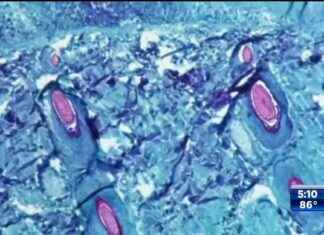Tokyo — Japan’s notable coronavirus pandemic resilience has generated scores of possible explanations, from the country’s preference for going shoeless indoors, to the purportedly low-aerosol-generating nature of Japan’s quiet conversation, to its citizens’ beneficial gut bacteria. In the age of COVID-19, even irreligiousness has been praised as a virtue. It is said that it saved the Japanese from being exposed to worshipful houses.
Japan is the country with the oldest population in the world, with nearly one third of its residents aged 65 and over. However, Japan has experienced fewer COVID deaths per capita than any other developed nation. Japan registered 246 COVID-19 deaths per one million people as of Thursday. This is more than New Zealand (263), which originally adopted a maximum-suppression, zero-COVID strategy. Comparatively, the U.S. has a cumulative death toll of 3,045 per million.
COVID mortality statistics are not complete, as they often depend on inconsistencies and/or incomplete records. Japan is estimated to have had more than 111,000 “excess death” since 2005, when both mortality due to social dislocation and disruptions in medical care are taken into account.
Japan’s excess death rate of 44 per 100,000 people is far higher than that of South Korea ((4), Singapore (-15), Australia, (-37), New Zealand (9), China (0.6), and Taiwan (-5). Even Thailand and Vietnam were better off.
Japan is still ahead of the U.S. (179) or Europe (140). Experts believe that the Japanese citizens deserve the credit for this relative success, and for their willingness to cooperate in antiviral measures.
Kenji Shibuya (research director at the Tokyo Foundation for Policy Research) stated that Japan’s COVID response relied primarily on people’s efforts and not on mandating them. These voluntary efforts worked better than top-down, draconian measures.
Peer pressure to use face masks in Japan is still so strong, even during heatstroke season, that the Japanese National Health Ministry was forced to issue a brochure encouraging people to not wear masks while they are out walking their dogs, biking, or walking to work.
Japan’s vaccination program is being credited with saving many lives. It was delayed initially but quickly implemented. Two-thirds of all citizens, and approximately 90% of seniors, have received booster shots despite initial concerns about vaccine hesitancy.
The country’s healthy population helped it to withstand the pandemic. Over the past four decades, Japanese lifespans have increased steadily, with a median lifespan of 87 years for females and 81 years for males. The U.S. obesity rate has risen to nearly 42% by 2020. Japan, however, has a very low obesity rate of 4%.
Its universal health insurance program has helped to lower the rates of heart disease and cancer. These diseases, along with obesity, are important risk factors for developing complications from a coronavirus infection.
Scientists are investigating a theory that suggests Japanese may possess an inherent advantage at the cell level in fighting COVID.
The state-funded RIKEN Center for Integrative Medical Sciences has focused on the potential antiviral defense of human leukocyte antibodies (HLA). These proteins are found in most cells of all our bodies. HLA markers are well-known within the field of organ transplantation. Matching HLA types to blood types is critical for reducing the risk of rejection.
Riken’s study revealed that Japanese subjects with HLA type A24 (common here and elsewhere in Asia) develop “cross-reactive T cells” in response to seasonal coronaviruses. These T cells can then redeploy to kill COVID-19 infections much faster than those without that marker.
Shin-ichiro Fujii is the principal investigator of the study. He said that he has applied for clinical trials to test a vaccine that targets immunocompromised patients with cancer. It would replicate the benefits of having the A24 type HLA protein in people who are unable or unwilling to develop neutralizing antibodies to the vaccines.
He stated that the real hope was to be able develop vaccines that stimulate T cells to produce a strong response against the infection. This has been demonstrated in the HLA group. We now need to examine other types.







